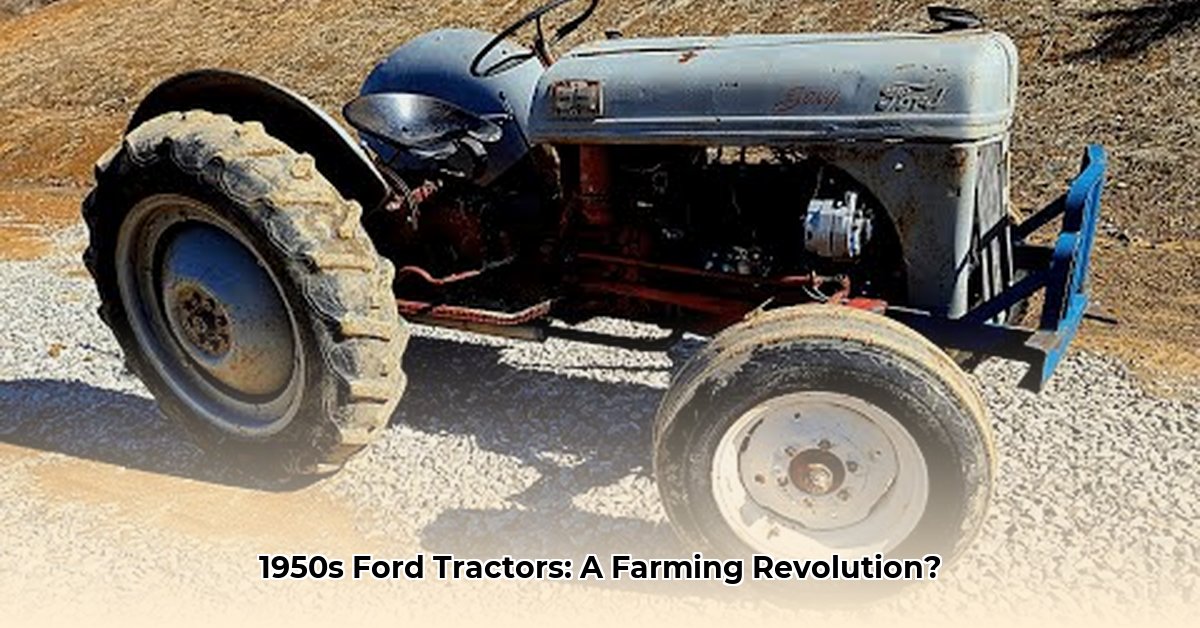
The 1950s Ford tractors—specifically the 9N, 2N, and 8N models—represent a pivotal moment in agricultural history, a transition from backbreaking manual labor to mechanized efficiency. This isn't just about old machinery; it's a story of innovation, wartime challenges, and a legendary business feud that reshaped farming. These weren't simply tractors; they were symbols of post-war progress and American ingenuity. This article explores their evolution, impact, and enduring appeal. For more detailed information on the Ford 9N, check out this dedicated website.
The 9N: A Technological Leap Forward
Imagine the late 1930s: farmers relied on outdated, labor-intensive equipment. Then came the Ford 9N in 1939, a revolutionary machine. Its most significant innovation was the three-point hitch system, designed by Harry Ferguson. This allowed for quick attachment and detachment of tools like plows and harrows, dramatically increasing efficiency. While the 9N had its quirks (some criticized its steering), its impact was undeniable. It showcased the potential of powerful, user-friendly farm equipment, foreshadowing the future of agriculture. Did this game-changing design immediately sweep the farming world? What factors contributed to its initial success or limitations?
The 2N: Endurance During Wartime
World War II drastically altered tractor production. The 2N, introduced during the war years, reflects the realities of material scarcity. Simpler designs and material substitutions were necessary to keep this vital equipment flowing to farmers. This wartime model represented a compromise, prioritizing functionality over advanced features. Did these compromises affect its overall performance and efficiency in the field? How significant was the 2N's contribution to maintaining food production during the war?
The 8N: Post-War Powerhouse and Lasting Legacy
Following the war, the 8N built upon lessons learned from its predecessors. More powerful and reliable than the 9N and 2N, it became an iconic machine. Its robust construction and user-friendly mechanics cemented its popularity. The 8N wasn't just about horsepower; it provided practicality and efficiency, embodying post-war prosperity. What engineering improvements were key to the 8N's greater success compared to its predecessors? How did its affordability and durability contribute to its remarkable popularity among farmers?
The Ford-Ferguson Partnership and its Fracture
The story of the Ford N-series tractors is inextricably linked to the often-turbulent partnership between Henry Ford and Harry Ferguson. Their collaboration initially yielded the groundbreaking three-point hitch, but disagreements over patents, profits, and personalities resulted in a highly publicized and bitter split. This conflict significantly impacted the trajectory of agricultural technology, leaving a profound mark on subsequent tractor designs. How did this conflict shape the future of agricultural technology? What key aspects of their partnership and eventual rupture remain debated or misunderstood among historians?
Collectors' Items and Restored Classics
Even today, these tractors are more than just relics. They're highly sought-after collector's items, prized for their robust construction and relatively simple designs. Their popularity in the restoration community speaks volumes about their enduring appeal. Many consider restoring them a deeply fulfilling endeavor. What makes these tractors continue to captivate enthusiasts and collectors? What aspects of these tractors' history contribute to their enduring appeal amongst restoration enthusiasts?
Comparing the N-Series Tractors: A Quick Overview
This table provides a concise comparison of the three models:
| Feature | 9N | 2N | 8N |
|---|---|---|---|
| Engine Horsepower | Approximately 13 | Approximately 15 | Approximately 20 |
| Engine Size | 120 cubic inches | 120 cubic inches | 120 cubic inches |
| Three-Point Hitch | Yes | Yes | Yes |
| Production Years | 1939-1942, 1947-1948 | 1942-1947 | 1947-1952 |
The 1950s Ford N-series tractors represent a watershed moment in agriculture. Their legacy extends beyond mere machinery; they stand as symbols of innovation, resilience, and the enduring human spirit. They encapsulate a bygone era of American farming, a time when hard work and ingenuity shaped the landscape of agriculture.